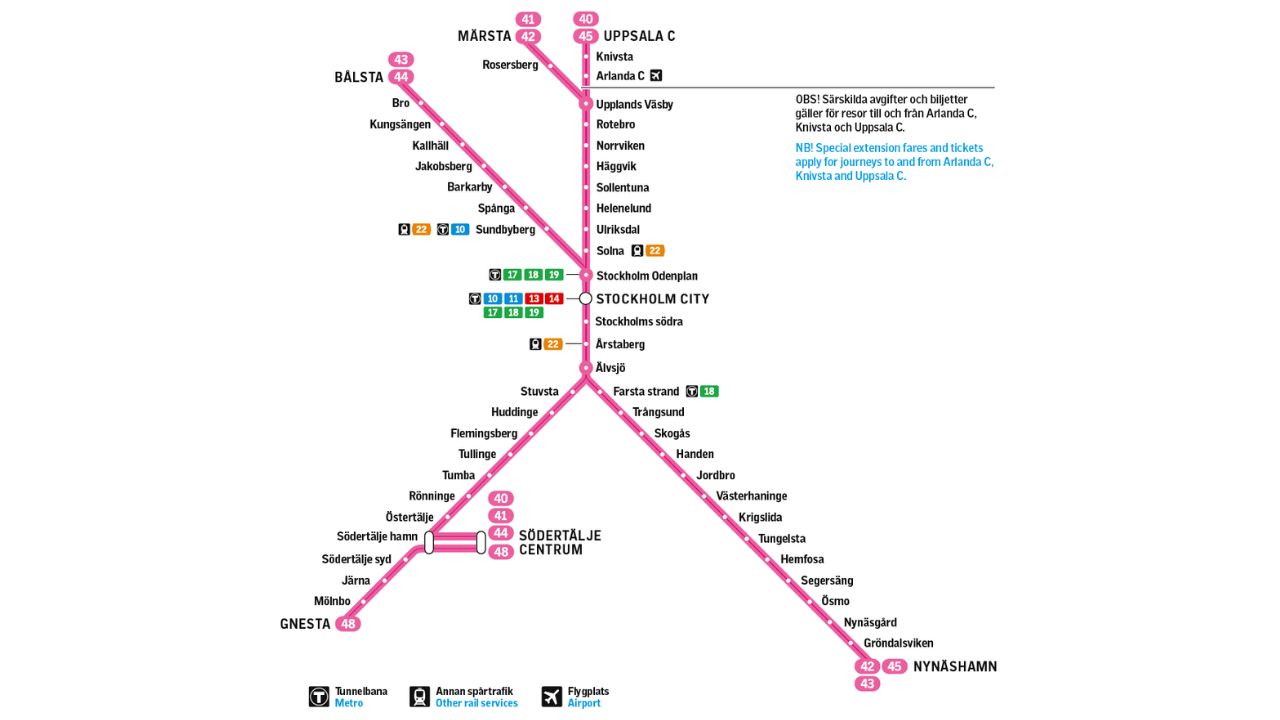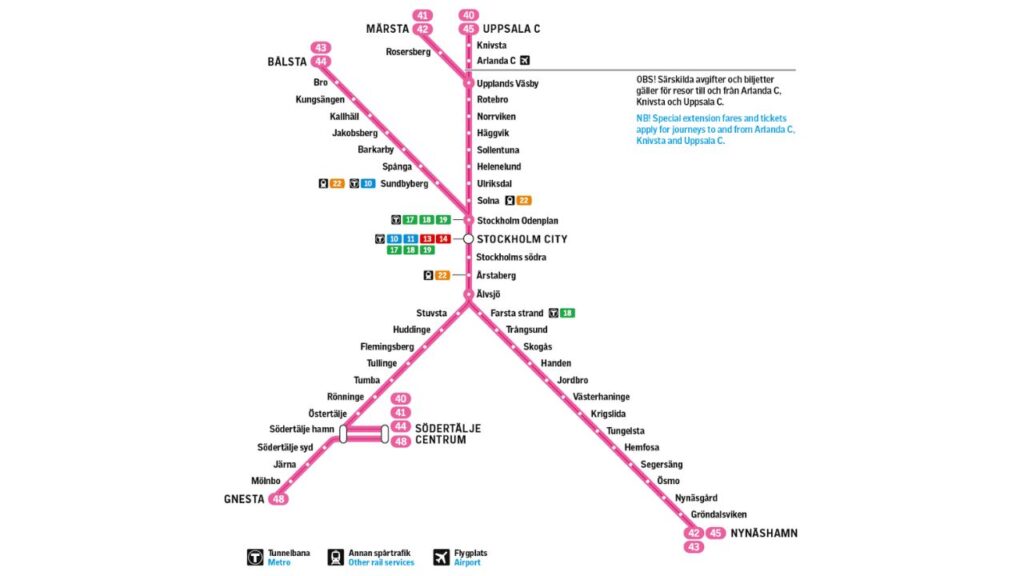Pendeltåg Stockholm karta

Last updated on October 21st, 2023 at 11:07 pm
Stockholm, the vibrant capital of Sweden, is known for its efficient and well-connected public transport system. Among its various modes of transportation, the commuter train network is a vital lifeline for both residents and visitors. With a history dating back to the 1970s, Stockholm’s commuter train system has evolved into a crucial part of the city’s infrastructure. In this article, we delve into the details of this complex network, its history, lines, stations, and how it seamlessly integrates with other modes of transportation.
Klicka på bilden för att se tydligt

A Glimpse of History The roots of Stockholm’s commuter train system can be traced back to 1975 when the first services were introduced. However, the term “pendeltåg” did not come into common use until the 1980s. In the beginning, the system had only one route that connected Södertälje södra (now Södertälje Hamn) with Kungsängen via Stockholm Central Station. Over the years, the network was expanded and transformed to meet the increasing demand of the city’s population.
Commuter Train Map for Stockholm Commuter Train Map for Stockholm Today, Stockholm boasts an extensive commuter train network with eight lines and a total of 55 stations. The lines cover long distances, ensuring that residents and travelers can conveniently reach different parts of the city and its surroundings. The lines are as follows:
Line 40: Uppsala C – Stockholm City – Södertälje center
Line 41: Märsta – Stockholm City – Södertälje center
Line 41X: Märsta – Stockholm City – Tumba (– Södertälje center)
Line 42X: Märsta – Stockholm City – Älvsjö (– Nynäshamn)
Line 43: Bålsta – Stockholm City – Nynäshamn
Line 43X: Kallhäll – Stockholm City – Nynäshamn
Line 44: (Bro –) Kallhäll – Stockholm City – Älvsjö
Line 48: Södertälje center – Gnesta
Integration with Other Modes of Transportation One of the central strengths of Stockholm’s commuter train network is its seamless integration with other modes of transportation. At commuter train stations in Sundbyberg, Solna, and Årstaberg, passengers can switch to trams or local trains. In Sundbyberg, there is also an opportunity to switch to the subway. Switching from commuter trains to subways can also be done at Odenplan, Stockholm City (T-Centralen), and Farsta strand. If you need to switch over to Tvärbanan, you can do so via stations in Sundbyberg, Solna, and Årstaberg.
A Brief History of Train Traffic During the first year of operation, there was only one route that went from Södertälje södra (now Södertälje Hamn) to Kungsängen via Stockholm Central Station. On June 1st, 1969, the system was expanded to Märsta via a branch after Karlberg Station (sv), and a new service was created where trains on Kungsängen’s branch ended in Stockholm C. In 1975 another route opened for Västerhaninge with a single rail bus to Nynäshamn. Trains on Kungsängen’s branch now end at Västerhaninge instead of Stockholm C and are now part of modern line 35. The airport has had express service from Stockholm Central through Arlanda Express since 1999 and was also accessible by bus from Märsta station. Implementation required negotiations between Stockholm Transport and Arlanda Express, which had operational rights for tracks. Since December 9th, 2012 it has been possible for Stockholm’s commuter trains to stop at Stockholm Arlanda Airport. Trips take 38 minutes from Arlanda C station to Stockholm C and 18 minutes from Arlanda C to Uppsala C. Discussions about expansion began in December 2007.

